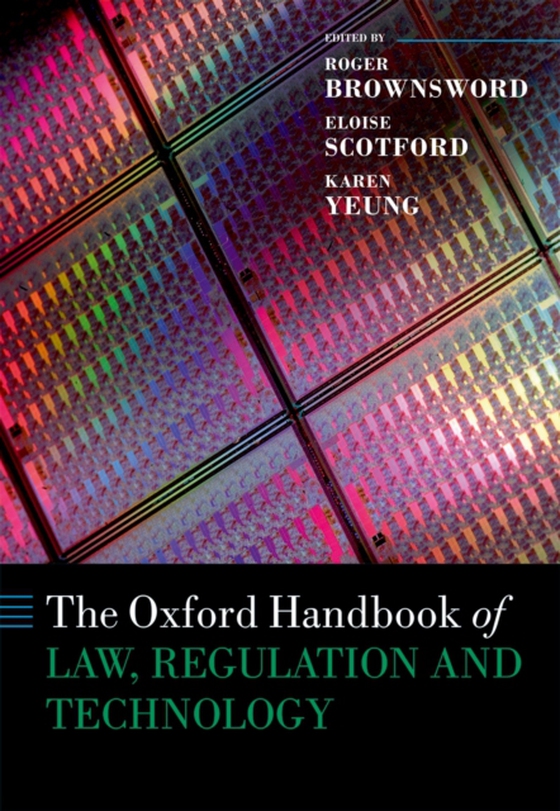
Oxford Handbook of Law, Regulation and Technology e-bog
1459,97 DKK
(inkl. moms 1824,96 DKK)
The variety, pace, and power of technological innovations that have emerged in the 21st Century have been breathtaking. These technological developments, which include advances in networked information and communications, biotechnology, neurotechnology, nanotechnology, robotics, and environmental engineering technology, have raised a number of vital and complex questions. Although these technol...
E-bog
1459,97 DKK
Forlag
OUP Oxford
Udgivet
25 juli 2017
Længde
1216 sider
Genrer
Corporate governance: role and responsibilities of boards and directors
Sprog
English
Format
pdf
Beskyttelse
LCP
ISBN
9780191502224
The variety, pace, and power of technological innovations that have emerged in the 21st Century have been breathtaking. These technological developments, which include advances in networked information and communications, biotechnology, neurotechnology, nanotechnology, robotics, and environmental engineering technology, have raised a number of vital and complex questions. Although these technologies have the potential to generate positive transformation and helpaddress 'grand societal challenges', the novelty associated with technological innovation has also been accompanied by anxieties about their risks and destabilizing effects. Is there a potential harm to human health or the environment? What are the ethical implications? Do this innovations erode ofantagonize values such as human dignity, privacy, democracy, or other norms underpinning existing bodies of law and regulation? These technological developments have therefore spawned a nascent but growing body of 'law and technology' scholarship, broadly concerned with exploring the legal, social and ethical dimensions of technological innovation. This handbook collates the many and varied strands of this scholarship, focusing broadly across a range of new and emerging technology and a vast array of social and policy sectors, through which leading scholars in the field interrogate the interfaces between law, emerging technology, and regulation. Structured in five parts, the handbook (I) establishes the collection of essays within existing scholarship concerned with law and technology as well as regulatory governance; (II) explores therelationship between technology development by focusing on core concepts and values which technological developments implicate; (III) studies the challenges for law in responding to the emergence of new technologies, examining how legal norms, doctrine and institutions have been shaped, challenged anddestabilized by technology, and even how technologies have been shaped by legal regimes; (IV) provides a critical exploration of the implications of technological innovation, examining the ways in which technological innovation has generated challenges for regulators in the governance of technological development, and the implications of employing new technologies as an instrument of regulatory governance; (V) explores various interfaces between law, regulatory governance, and new technologiesacross a range of key social domains.
 Dansk
Dansk

